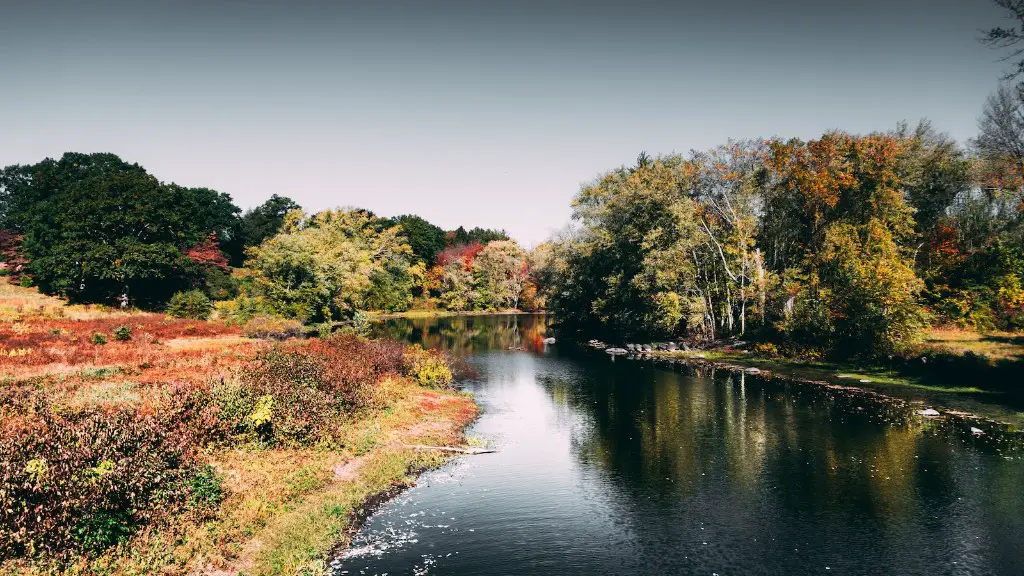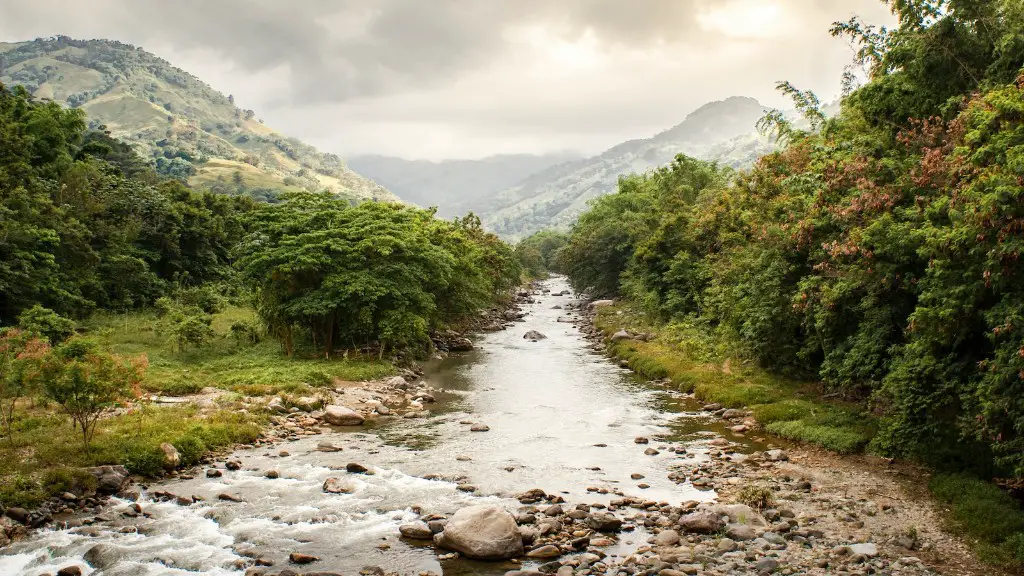The Mississippi River is a major river located in the United States, which runs from its source in Lake Itasca in Minnesota to the Gulf of Mexico in Louisiana.The Mississippi River is the fourth longest river in the world, and holds the title of being the largest river system in North America. Spanning over 2,300 miles, the Mississippi River constitutes of many smaller tributaries and streams, that feed and drain the river, making it one of the most vital water sources in America.
The Central Mississippi is also known as the “uppermost” portion of the river, extending from Lake Itasca, Minnesota to Caruthersville, Missouri. Its waters provide essential regular transport and recreation of many goods, animals, and people, as well as shelters a large number of different species.On its way down to Louisiana, the Lower Mississippi River passes through three geographically distinct regions, including the Midwest Corn Belt, the South and eastern edged of the Ozarks, and the Delta region.
The Mississippi river contributes greatly to the shipping industry of the U.S., as over 600 million tons of products are shipped on this water the channel yearly. Similarly, the recorded number of fish species in the river is over 200, and it is said that more than 130 species are native to the Mississippi River.Forests along the banks of the river are incredibly important for controlling flooding, and are also home to a significant diversity of animals.
The impact of the Mississippi river on the United States is substantial. Along the lower part of the river lies the second largest delta, which holds plenty of sediment and consists of over 15,000 square miles of wetlands. This important feature of the land provides services and benefits to both humans and wildlife, such as the protection of ground water, improved water filtration and tourism, as well as habitat for a variety of both terrestrial and aquatic life.
Although the Mississippi River has a large part in supplying fresh water to the growing population of the United States and providing economical benefit to the residents, it has suffered a great deal of environmental damage due to pollution.Shoreline flooding, siltation of the river, commercial and urban development, agricultural runoff, and industrial pollutants are some of the major issues that the river has had to endure, causing a decline in both its water quality and amount of aquatic life.
In recent years, there has been an effort to conserve the health of the Mississippi River, by implementing a series of policies designed to reduce pollution and increase the number of aquatic species inhabiting the river.Furthermore, conservation efforts such as the establishment of protected wetlands and the introduction of measures to combat soil erosion will play an important factor in preserving the ecosystem of the Mississippi River.
Soil Erosion and the Mississippi River
Soil erosion is a major problem in the Mississippi River, caused by the increased rate of sediment flowing down the river. Sedimentation from construction and agriculture activities is the primary source of soil erosion, as it cause pollutants and pollutants produced during those activities to accumulate in the river.Because of this, there has been a decline in water quality, with reduced oxygen levels and increased toxin levels present in the water.
Furthermore, soil erosion leads to a decrease in the habitat of aquatic species inhabiting the river.Without adequate levels of sediment in the water, these fish struggle to feed and reproduce, as they have fewer resources available.The effects of soil erosion can also affect the hydrology of the area, impacting the regulation of the water and leading to an overall decrease in the health of the river.
A number of methods have been put in place in order to combat the issue of soil erosion in the Mississippi River.The implementation of conservation policies, such as the creation of protected wetlands, can reduce soil erosion by protecting the river from any potential harmful activities or pollutants.Furthermore, farmers can modify their agricultural practices to help stabilize the soil, as well as establishing grassy barriers along the banks of the river to better control the speed of the water and prevent soil erosion.
Flooding in the Mississippi River
Flooding is a significant issue, that affects the Mississippi River and its surrounding areas. It is a natural event which can be caused by sudden rainfalls or snowmelt, leading to water spilling out of its banks and infiltrating the surrounding land.
The effects of flooding can have devastating consequences.It will cause destruction and damage to any homes, businesses and public infrastructure that are in its path, as well as a great loss of both property and soil.Furthermore, flooding also has an impact on water quality, as pollutants and soil sediment is routinely washed away into the river. This will result in damage to aquatic life inhabiting it, leading to a decrease in their numbers and a disruption in the local ecosystem.
In order to combat the effects of flooding, a number of preventative methods have been put in place around the Mississippi River. These include the establishment of levees, or tall artificial walls, to stop the water from overflowing into the surrounding land, as well as providing local authorities with flood simulation and mapping programmes, which can identify and assess any potential flood risk in the area.
Furthermore, the planting of forests along the banks of the Mississippi River can reduce the risk of flooding, as they will absorb the water and reduce its speed.This will also help preserve water levels and create a natural buffer zone, which will also have the added benefit of providing shelter and resources to the native species inhabiting the area.
Economic and Recreational Benefits of the Mississippi River
The Mississippi River offers a range of economic and recreational benefits. Not only does it provide a waterway for the trade of goods and commodities on its banks, but it is also a popular tourist destination for people wanting to experience the beauty and majesty of the river.
The shipping industry is the main industry utilizing the Mississippi River, as it transports 20,000 tons of cargo yearly. Livestock, grains, chemicals and oil are routinely shipped down the river, providing the ports with a good source of income and providing a driving force to the local economy.In addition, hunting, fishing, bird watching and boat rides are just some of the recreational activities that people are able to experience on the Mississippi River.
The river has even been featured in songs, novels and poetry, attesting to its grandeur and importance as a historical symbol. Mark Twain’s classic novel “The Adventures of Huckleberry Finn”, features the Mississippi River as the backdrop for the story of the young Huck and his companion Jim, further cementing its place in the narrative of America.
Pollution in the Mississippi River
The Mississippi River faces a number of water-related issues, one of the most notable being pollution. This can be from both natural and human sources, with the most common pollutants coming from industrial waste, agricultural activities and sewage runoff.
As a result, water quality has declined significantly, with the river containing high levels of toxins, chemicals and heavy metals such as mercury and lead.These pollutants can be extremely harmful to both humans and aquatic life, as it has lead to a decrease in oxygen levels and a decline in the number of fish species inhabiting the river.
The introduction of stricter regulations and policies by both the Federal and State Governments, have been put in place to combat the issue of pollution. These policies focus on reducing hazardous waste disposal, promoting environmentally friendly practices and improving water filtration methods, which will have a great impact on the health of the Mississippi River.
However, the implementation of such policies will require greater public investment and education, to ensure that the people living near the river are aware of the dangers of polluting it and understand the importance of preserving its health.
Conclusion of Measures for the Mississippi River
Conserving the health of the Mississippi River is a critical aspect of protecting the United States from any potential harm.By introducing measures to combat soil erosion, flooding, and pollution, the government and its citizens can ensure that the river will remain healthy for many years to come.
Such measures include the introduction of protected wetlands and forests, the establishment of flood simulation and mapping programs, and the enforcement of stricter regulations on hazardous waste and agricultural activities.
By putting a greater emphasis on protecting the Mississippi River, we can ensure that its role in shipping, economic and ecological benefits will be preserved, and that its beauty will remain intact for generations to come.





